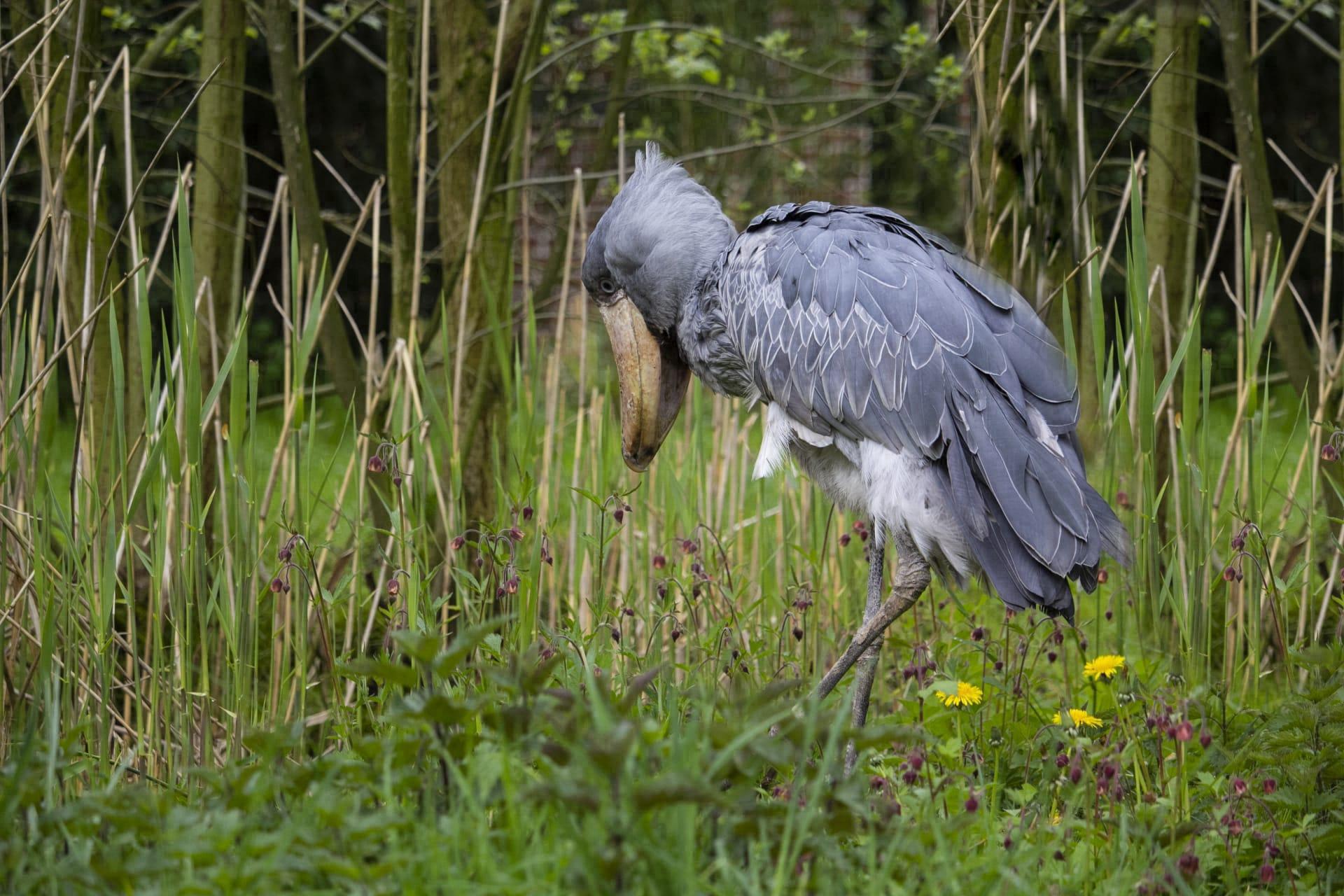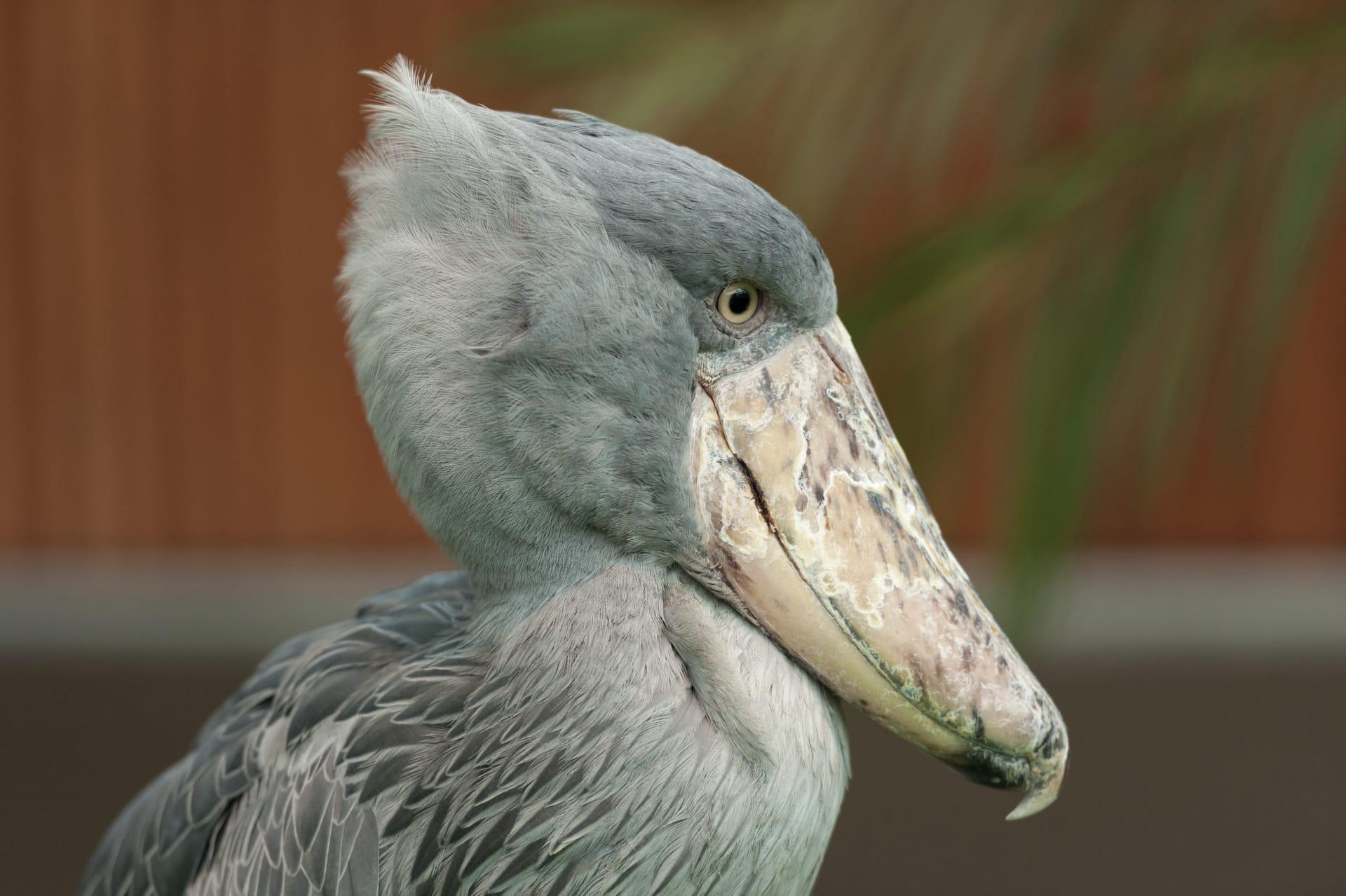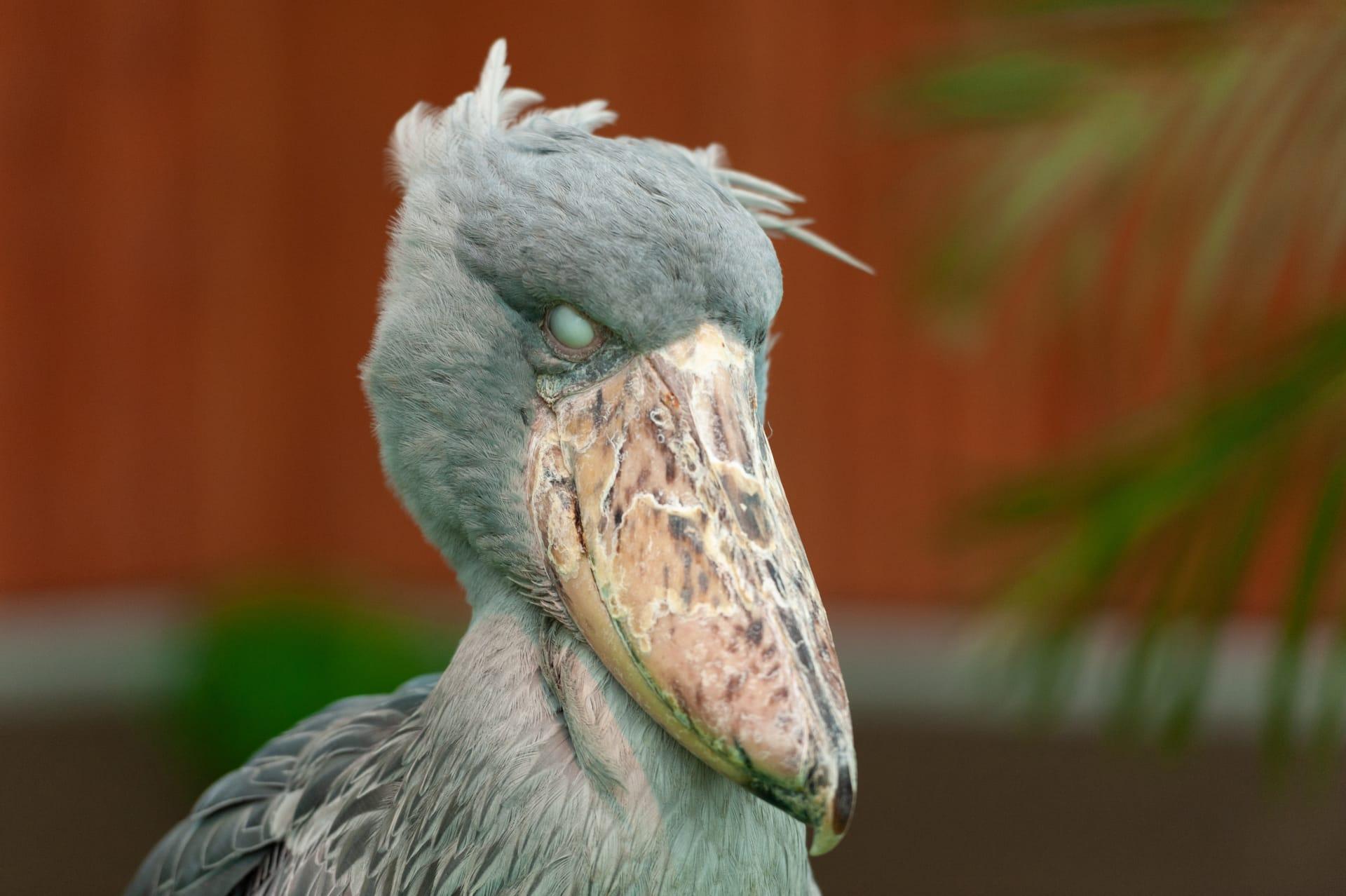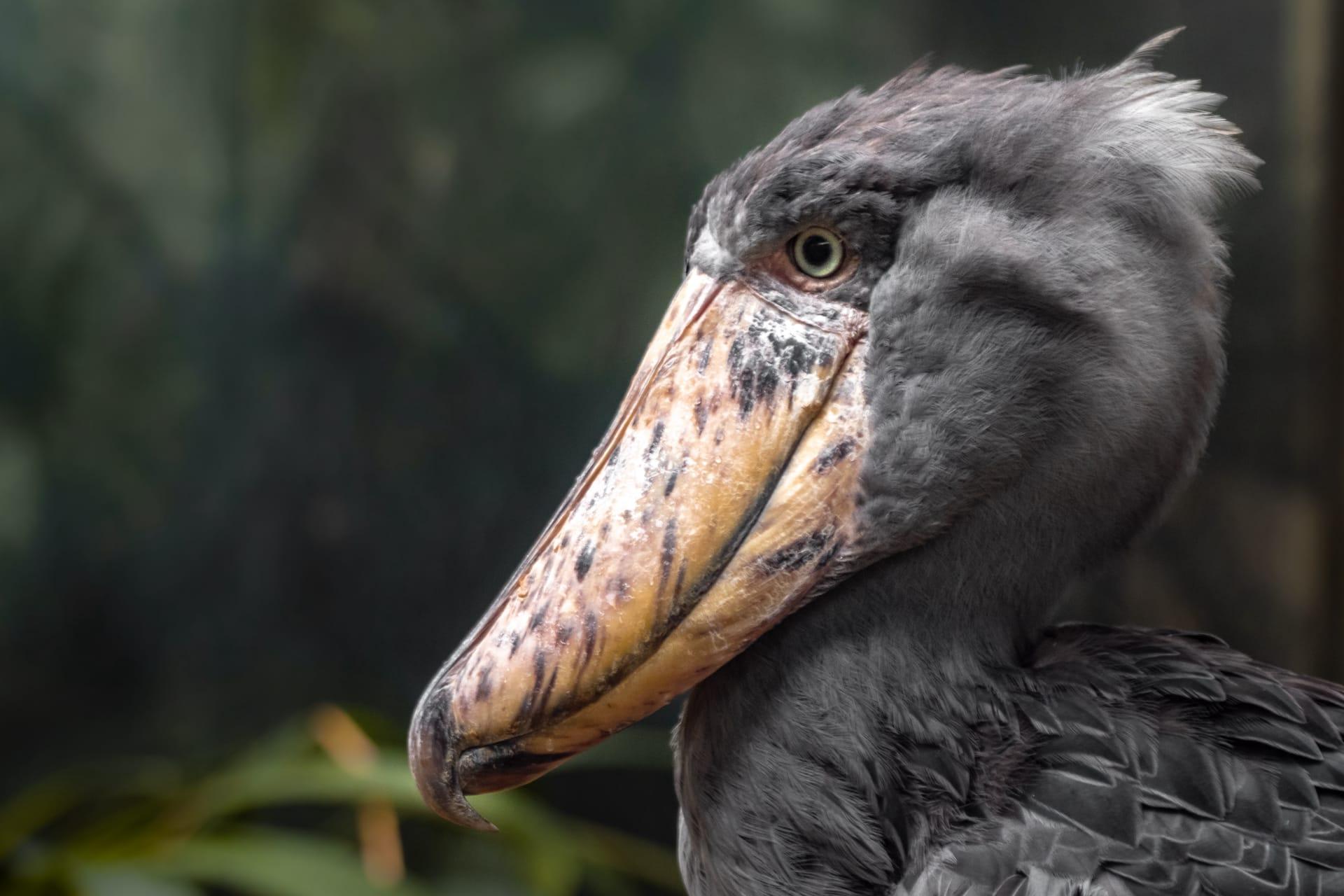Shoebill Trivia
- Home /
- Trivia Question /
- Animal /
- Shoebill Trivia
1
Question: What makes the shoebill's bill so unique, and how big can it get?
Answer: The shoebill's bill, resembling an old-fashioned wooden clog, is one of its most distinctive features. This bill can grow up to 9 inches long and 4 inches wide. Its size and shape allow the shoebill to expertly catch and hold slippery prey like fish and snakes.
Question: How does the shoebill's hunting technique differ from other birds?
Answer: Unlike many birds, the shoebill practices a motionless hunting strategy. It stands still for long periods, waiting patiently in shallow waters. Once it spots prey, it strikes with lightning speed, using its large bill to snatch or impale its meal.

2
Question: Is it true that shoebills are related to storks?
Answer: Contrary to popular belief, shoebills are not closely related to storks. They belong to the order Pelecaniformes, which makes them closer relatives to pelicans. This misconception likely arises from their stork-like appearance.
Question: Do shoebills exhibit any social behaviors?
Answer: Shoebills are largely solitary creatures, known for their silent demeanor. They typically come together only to mate and are otherwise seen alone or in small groups. Their communication is minimal, often limited to bill-clattering during the breeding season.

3
Question: What is the typical lifespan of a shoebill in the wild?
Answer: In their natural habitat, shoebills can live up to 35 years. However, this lifespan can be influenced by environmental factors and threats such as habitat destruction and illegal wildlife trade.
Question: How do shoebills care for their young?
Answer: Shoebill parents are attentive and protective. They usually lay one to three eggs, and both parents participate in incubation, which lasts about 30 days. The chicks are born altricial (helpless) and depend on their parents for warmth, food, and protection for several months.

4
Question: Where in the world can you find shoebills in their natural habitat?
Answer: Shoebills are primarily found in East Africa, especially in large freshwater swamps in countries like Uganda, Rwanda, Sudan, and Zambia. They prefer habitats with dense vegetation and shallow water, ideal for their stationary hunting style.
Question: What is the diet of a shoebill, and how does it affect their ecosystem?
Answer: Shoebills mainly eat fish, notably lungfish, catfish, and tilapia. They also consume amphibians, small reptiles, and occasionally small birds. By preying on these species, shoebills play a vital role in controlling the population dynamics of their ecosystem.

5
Question: How do shoebills adapt to their swampy environment?
Answer: Shoebills have long, sturdy legs and wide, splayed toes, which help them walk on floating vegetation in swampy areas without sinking. Their grey plumage also provides excellent camouflage among the reeds and water plants.
Question: Are shoebills under threat, and what conservation efforts are in place?
Answer: Shoebills are classified as vulnerable due to habitat loss, human disturbance, and the illegal pet trade. Conservation efforts include habitat protection, anti-poaching measures, and research programs to better understand their behavior and ecology for more effective conservation strategies.